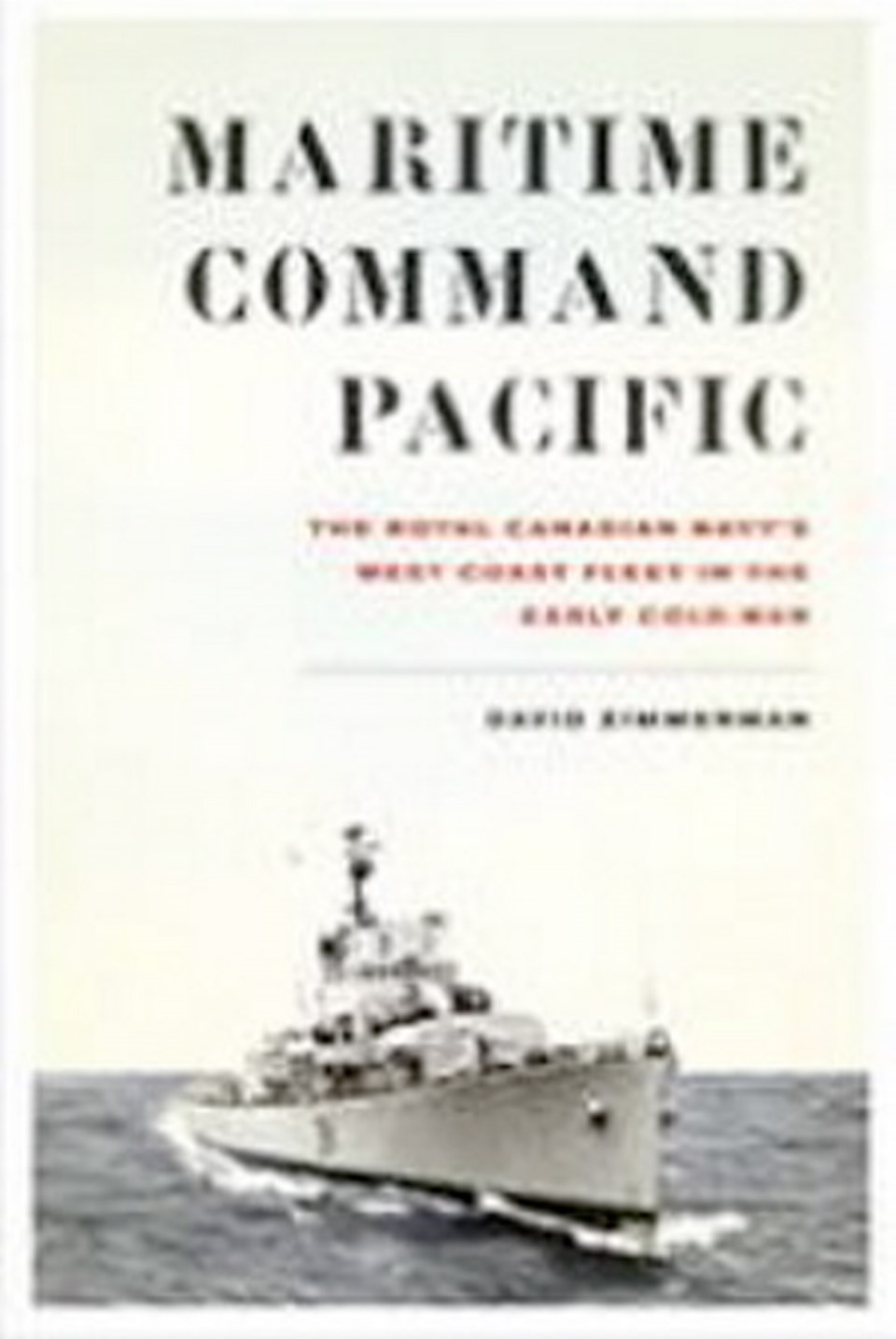Maritime Command Pacific: The Royal Canadian Navy’s West Coast Fleet in the Early Cold War
By David Zimmerman
Canadian War Museum/UBC Press, 206 pp., $32.95
This book has a straightforward goal: To ensure that the role of Maritime Command Pacific — MARPAC, as we know it here — earns its rightful place in the history of Canada’s defence policy since the Second World War.
Author David Zimmerman, a professor of military history at the University of Victoria, argues that for too long, Royal Canadian Navy sailors on the East Coast looked down on their counterparts in the west, referring to assignments here as being like a yacht club.
It can be difficult to counter unwarranted beliefs, but the Cold War focus on Europe made it easy to assume that not much was happening with the navy on this coast. The navy also witnessed downsizing in the aftermath of the Second World War, and the West Coast was particularly hard hit.
As luck would have it, however, the West Coast had more ships ready for sea when the Korean War broke out, so three destroyers from Esquimalt could be sent immediately to Asia.
In Maritime Command Pacific, Zimmerman deals with the day-to-day operations of MARPAC, and its predecessors, from 1945 through 1965, the first years of the prolonged Cold War. Many military histories deal with combat, yet ignore the importance of maintaining a navy during times of peace. Zimmerman does not make that mistake.
The navy’s role evolved in those years as a result of increased traffic through its area of responsibility, which extends 1,700 kilometres west into the Pacific Ocean and north to Alaska.
This large area includes major air and sea routes, as well as the oil tankers moving between Valdez, Alaska, and the lower states.
Life in the navy was not always routine. In the late 1940s, there were four work stoppages — mutinies, one might say — on navy ships. Three of those incidents occurred on the West Coast, and were resolved after the officers listened to the grievances of the crew.
MARPAC came into existence in 1959 as part of a re-organization of the headquarters operation. The fleet was also re-organized that year.
Postwar cuts to the naval service were followed by increased spending, resulting from the uncertainty of the Cold War. Then came more budget cuts, and the country’s commitment to the navy waned again — leaving sailors at the mercy of their masters in Ottawa.
Zimmerman notes that MARPAC has been more active since Sept. 11, 2001 than at any other time since the Korean War. It has worked in peacekeeping, anti-terrorism and anti-piracy patrols, and has dealt with drug smugglers and ships carrying illegal immigrants.
There will be much more work to be done in the years ahead. It is imperative that the strength of MARPAC be maintained and increased, as soon as possible.
Zimmerman’s book succeeds in raising awareness of the recent history of the navy on this coast. He has done an effective job of laying a foundation for further histories of the role of the navy in the Cold War.
Maritime Command Pacific will result in new thinking about what happened on our coast because of federal government actions, and because of the commitment of those who were stationed here.
The reviewer is the editor-in-chief of the Times Colonist.



